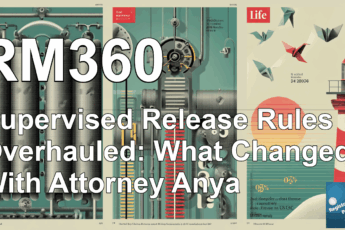Introduction
In recent weeks, a proposed bill in Utah’s legislature sparked significant debate: Should certain people on the sex offender registry have a clearer, shorter path to removal? The discussion around Senate Bill 155 (SB 155) became a microcosm of the national struggle, pitting legal reform and questions of justice against powerful public perceptions deeply rooted in fear and stigma.
Though Utah is known for its conservative leanings, the sheer reaction—phone calls, emails, and an unusually packed committee hearing room—reveals how emotionally charged and politically fraught registry reform remains, even in states with monolithic political cultures. In the end, the bill did not advance, succumbing to opposition that cut across typical partisan lines.
By exploring what happened with Utah’s SB 155, this article will uncover why sex offender registry reform is so disfavored in public opinion, what advocates are up against, and what kinds of legal and cultural strategies may be required to enact meaningful change. Readers will learn about the legislative battle in Utah, the roots of our current registry system, and informed perspectives on both obstacles and possible ways forward.
Understanding Utah’s SB 155: The Push for Sensible Reform
What Did the Bill Propose?
Senator Todd Weiler introduced SB 155 in early 2024, aiming to recalibrate Utah’s sex offender registry requirements. The original bill sought to shift certain offenses from lifetime registration to a 10-year mandated term, allowing for eventual removal from the registry for some individuals deemed lower-risk or whose offenses were less severe.
This was not a wholesale dismantling of the registry. Instead, it was a targeted reform: recognizing that not all offenses, or all offenders, pose the same risk to public safety. Research and experience from other states suggest that overly broad registries undermine both rehabilitation and public protection by making it harder for former offenders to rebuild their lives and by diluting law enforcement resources.
Key Points Proposed by SB 155:
- Certain crimes with mandatory lifetime registration could be moved to a 10-year term.
- This would allow some to exit the registry after demonstrating a decade of offense-free living.
- The change was in line with emerging evidence and reforms adopted by other states.
The Immediate Backlash
Despite its measured scope, public reaction to SB 155 was swift and intense. Senator Weiler reported receiving a deluge of calls and emails from constituents adamantly opposed to any registry reform. The bill’s committee hearing saw unusually high attendance, indicating the charged nature of the debate.
In Utah—a state where Republicans overwhelmingly control both legislative chambers—such strong resistance within the majority party was telling. Though SB 155 narrowly passed a committee vote (5-3), it stalled thereafter and, according to legislative tracking at the time of writing, appears to be dead.
Why Was There So Much Opposition? The Power of Public Perception
An Issue Beyond Partisan Politics
Unlike many controversial issues that split along party lines, sex offender registries unite an unusual coalition in opposition to reform—rooted in fears about safety and the stigmatization of people with sex offense records.
Larry, a commentator following these developments, observed that, “You can’t make life easier for PFRs [persons forced to register]. The people are just not there and willing yet for that progressive type of change.”
This sentiment echoes a broader reality: efforts to make registries more nuanced—by distinguishing between levels of risk or crafting ways for individuals to demonstrate rehabilitation—often run headlong into a public narrative shaped over decades. For many, any move that could be seen as “softening” consequences for sex offenses is politically toxic.
The History Behind the Registry
To understand the deep-seated resistance to reform, it’s important to look back at why registries were created. The federal push began in the 1990s, especially after the 1994 Jacob Wetterling Act—which set guidelines for states to track sex offenders—and subsequent high-profile cases and laws (such as “Megan’s Law” and the Adam Walsh Act). The laws reflected national anguish over crimes against children and were designed in an atmosphere of crisis and moral panic.
This legacy matters. For nearly 30 years, the public has been inundated with messages warning of the dangers posed by “sex offenders,” with little nuance or discussion about rehabilitation, recidivism rates, or the varied spectrum of offenses that land people on such lists.
Barriers to Meaningful Reform: Public, Political, and Legal
Social Stigma and the Lasting Power of Fear
Research consistently shows that people with sexual offenses are more stigmatized than those with almost any other criminal record. Media coverage amplifies the worst cases, while laws rarely differentiate between a spectrum of conduct.
A 2021 meta-analysis published in Criminal Justice and Behavior found that registry laws often fail to reduce recidivism, yet they persist because of public fear and political utility. Lawmakers often hesitate to support reforms—even modest ones—due to anticipated backlash, as seen in Utah’s SB 155.
Political Risks: Why Most Legislators Duck for Cover
Utah’s experience is not unique. Across the U.S., bills to reduce registry terms or create mechanisms for review face political risk. Supporting registry reform can become a “third rail” issue for politicians, even in one-party-dominated states. Advocacy groups working on criminal justice reform routinely report that sex offense issues are the “last frontier” of bipartisan justice reform.
Legal Challenges: The Role of Litigation
When legislative change stalls, legal challenges often become the alternative. For example, Michigan’s sex offender registry system has been the subject of significant lawsuits—challenging both retroactive application and the breadth of registry requirements.
Larry, in the original discussion, noted: “Those are important things. But somehow or another, we’ve got to break through with public opinion… We are close to thirty years behind now since the registry passed.”
Litigation can force states to refine their laws—especially when courts find them unconstitutional—but it can be a slow path, and outcomes are uncertain.
Is There a Path Forward? Changing Hearts, Minds, and Laws
Facing a 30-Year Deficit in Public Understanding
The overriding challenge is the substantial lag between research, judicial opinion, and public understanding related to sex offense registries.
Ongoing Myths Versus Facts
- Myth: All people on the sex offender registry are high risk for reoffending.
- Fact: Recidivism rates for sex offenses are lower than for most other crimes, according to the U.S. Department of Justice.
- Myth: Registries are the best way to keep communities safe.
- Fact: There is little evidence that broad, public registries prevent new crimes; targeted supervision and reentry support are more effective.
The Need for Public Education and Storytelling
Experts agree: Policy will only evolve when public perception does. This may require a more active campaign of public education, lifting up the stories of people who have rebuilt their lives, and sharing data about what works (and what doesn’t) to reduce sexual harm.
Some advocates suggest:
- Engaging with local media to spotlight nuanced, data-driven perspectives
- Partnering with researchers and organizations to educate legislators and constituents
- Sharing powerful personal stories from those directly impacted by the registry
A Case Study: Michigan’s Legal Fight
Michigan has become a cautionary tale and a beacon: Courts have found its registry laws to be unconstitutionally broad and punitive. As a result, Michigan has faced repeated orders to narrow its system and make it more just—partly leading to bills that offer registrants clearer paths off the list.
But as Andy and Larry in the transcript hint, waiting for litigation is not enough; deeper change depends on confronting stigma and fear head-on.
Conclusion: Lessons from Utah—And What’s Needed Next
Utah’s attempt at registry reform, with SB 155, failed despite its modest scope. The episode revealed how powerfully public opinion and political risk inhibit legislative change—even where there is evidence in favor of reform and a ripe legislative moment.
Yet, the need for nuanced, evidence-based sex offense policy grows more urgent every year. Lives, families, and the integrity of the justice system depend on moving beyond fear toward rational, compassionate reform.
Actionable Takeaways:
- Stay Informed: Support organizations tracking registry reform, such as NARSOL or the ACLU, and follow legislative developments in your state.
- Engage in Public Education: Share accurate research and stories that can shift perceptions among neighbors, community leaders, and lawmakers.
- Advocate for Data-Driven Policy: When possible, communicate with legislators—by phone, email, or public testimony—to demand that criminal justice policy reflect empirical evidence, not just emotion or fear.
If you’re in Utah or another state considering similar reforms, recognize that change is hard-fought—but also that every conversation and every push for truth brings the possibility of a fairer and safer society.
Sources:
– U.S. Department of Justice, Recidivism of Sex Offenders Released from Prison
– Criminal Justice and Behavior, 2021, “Efficacy and Consequences of Sex Offender Registration and Notification Laws”
– National Association for Rational Sexual Offense Laws (NARSOL)
– Commentary from Andy and Larry, legislative tracking as of June 2024
Original reporting and perspectives quoted from transcript of Andy and Larry’s legislative news discussion, June 2024. Additional context and analysis provided to inform and expand upon the debate.





Leave a Comment